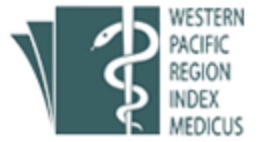The CAPE will Influence the Angiogenesis in Traumatic Brain Injury
DOI:
https://doi.org/10.31436/imjm.v24i01.2527Keywords:
Traumatic brain injury, Angiogenesis, Caffeic Acid Phenethyl Ester, PredictorsAbstract
INTRODUCTION: Traumatic brain injury (TBI) is a frequent and highly heterogeneous neurological disorder which has the potential to cause major social and economic consequences. However, Caffeic Acid Phenethyl Ester (CAPE), obtained from propolis through extraction from honey bees, has long been known as a folk medicine. This study identifies the predictor factors for angiogenesis in a TBI rat model following the provision of CAPE. MATERIALS AND METHODS: This experimental control treatment and randomization study used fifteen male Sprague-Dawley rats with surgically induced brain injury. The rats were treated with CAPE. We measured vascular endothelial growth factor (VEGF) levels as an indicator and Myeloperoxidase (MPO) as a polymorphonuclear activity marker. The gauges for brain edema and oxidative stress were mRNA, AQP4, and F2 Isoprostane, respectively. The correlation test of TBI parameters in the form of MPO, mRNA AQP4, and F2 isoprostane against VEGF as an angiogenesis process indicator was performed to identify the factors associated with post-TBI angiogenesis. RESULTS: Mean values were obtained using a descriptive tests, while the correlation test results were VEGF (938274.352), AQP4 mRNA (10099.00), MPO (9284222.028), and F2-Isoprostane (307346.562). The findings suggested a strong correlation between all TBI parameters and VEGF as an angiogenesis indicator (p<0.001). In addition, polymorphonuclear activity (MPO) and the presence of brain edema, as indicated by mRNA AQP4 expression, were identified as the most significant influences. CONCLUSION: The post-TBI angiogenesis (VEGF) process, conducted by administering CAPE, was influenced by polymorphonuclear activity (MPO) and increased water content in the brain (mRNA AQP4).
Downloads
Downloads
Published
How to Cite
Issue
Section
License
All material submitted for publication is assumed to be submitted exclusively to the IIUM Medical Journal Malaysia (IMJM) unless the contrary is stated. Manuscript decisions are based on a double-blinded peer review process. The Editor retains the right to determine the style and if necessary, edit and shorten any material accepted for publication.
IMJM retain copyright to all the articles published in the journal. All final ‘proof’ submissions must be accompanied by a completed Copyright Assignment Form, duly signed by all authors. The author(s) or copyright owner(s) irrevocably grant(s) to any third party, in advance and in perpetuity, the right to use, reproduce or disseminate the research article in its entirety or in part, in any format or medium, provided that no substantive errors are introduced in the process, proper attribution of authorship and correct citation details are given, and that the bibliographic details are not changed. If the article is reproduced or disseminated in part, this must be clearly and unequivocally indicated.










